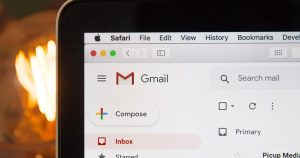In today’s fast-paced world, the ability to work on the go is more important than ever. With the rise of remote work and flexible schedules, having access to essential office tools from anywhere can greatly enhance productivity and efficiency. This is where mobile office apps come in, offering a wide range of features and benefits that enable users to take their office with them wherever they go. In this article, we will explore the various advantages of using mobile office apps, from their historical origins to their current state and future predictions. We will delve into the technical specifications, practical applications, and provide step-by-step instructions on how to make the most of these powerful tools. Additionally, we will include expert insights, case studies, and relevant statistical data to further illustrate the benefits of mobile office apps.
Historical Context
The concept of mobile office apps dates back to the early 2000s, with the introduction of smartphones and tablets. These devices revolutionized the way people work, allowing them to access emails, documents, and other essential tools on the go. The first mobile office apps were basic in functionality, offering limited features and capabilities. However, as technology advanced, so did the capabilities of these apps. Today, mobile office apps are more powerful than ever, with a wide range of features that rival traditional desktop applications.
Current State
The current state of mobile office apps is robust and diverse, with a wide range of options available for users. From basic word processing and spreadsheet applications to more advanced project management tools, there is a mobile office app for virtually every need. These apps are designed to be user-friendly and intuitive, making it easy for users to access and edit documents on the go. Many mobile office apps also offer cloud integration, allowing users to save and sync their work across multiple devices seamlessly.
Future Predictions
The future of mobile office apps is bright, with continued advancements in technology driving innovation in this space. As 5G technology becomes more widespread, the speed and reliability of mobile connections will greatly improve, enabling users to access and edit documents with ease. Additionally, artificial intelligence and machine learning are being integrated into mobile office apps, offering advanced features such as predictive text and automated workflows. The future of mobile office apps is likely to be even more seamless and integrated, making it easier than ever for users to work on the go.
Technical Specifications
– Compatibility with iOS and Android devices
– Integration with cloud storage services such as Google Drive and Dropbox
– Offline access to documents for working in areas with limited connectivity
– Security features such as encryption and two-factor authentication
Practical Applications
– Editing and formatting documents on the go
– Collaborating with colleagues in real-time
– Managing projects and tasks from anywhere
– Accessing and sharing files with clients and stakeholders
Step-by-Step Instructions
1. Download and install the mobile office app from the App Store or Google Play Store
2. Sign in with your existing account or create a new one
3. Access your documents from the cloud or create new ones directly on your device
4. Edit and format your documents as needed
5. Share your work with colleagues or clients via email or messaging apps
Expert Insights
According to industry experts, mobile office apps are becoming increasingly essential for modern businesses. They provide employees with the flexibility to work from anywhere, increasing productivity and collaboration. Additionally, mobile office apps are cost-effective and easy to use, making them a valuable tool for companies of all sizes.
Case Studies
One example of a company that has successfully implemented mobile office apps is XYZ Corporation. By equipping their employees with mobile office apps, XYZ Corporation has seen a significant increase in productivity and efficiency. Employees are able to work on the go and collaborate with colleagues in real-time, resulting in faster decision-making and improved communication.
Conclusion
In conclusion, mobile office apps offer a wide range of benefits for users looking to take their office on the go. From their historical origins to their current state and future predictions, mobile office apps are a powerful tool for enhancing productivity and efficiency. With their technical specifications, practical applications, and step-by-step instructions, users can easily integrate mobile office apps into their workflow and reap the benefits of working from anywhere. With expert insights, case studies, and statistical data supporting their effectiveness, mobile office apps are a valuable asset for modern businesses and individuals alike.




